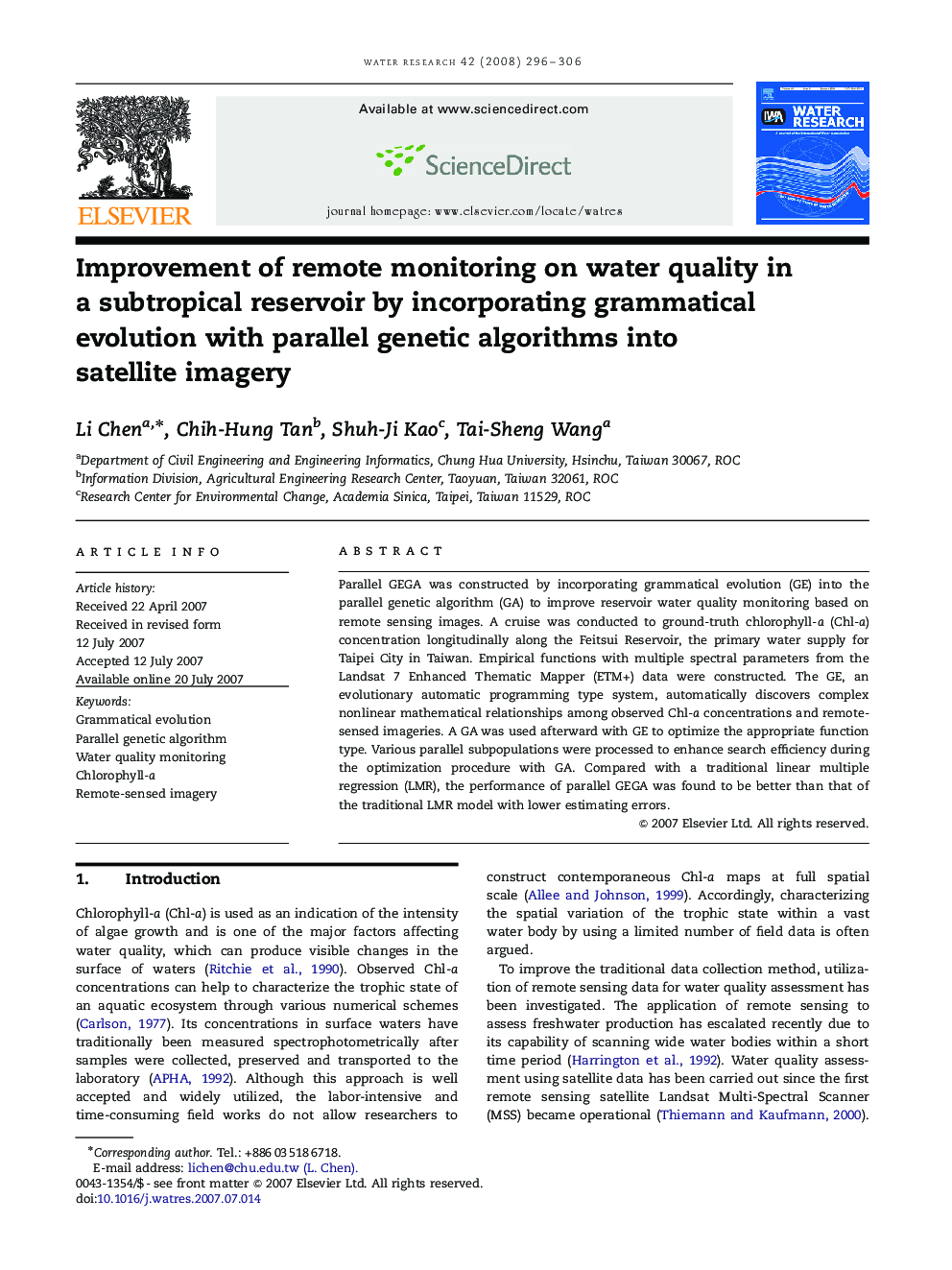| Article ID | Journal | Published Year | Pages | File Type |
|---|---|---|---|---|
| 4485763 | Water Research | 2008 | 11 Pages |
Parallel GEGA was constructed by incorporating grammatical evolution (GE) into the parallel genetic algorithm (GA) to improve reservoir water quality monitoring based on remote sensing images. A cruise was conducted to ground-truth chlorophyll-a (Chl-a) concentration longitudinally along the Feitsui Reservoir, the primary water supply for Taipei City in Taiwan. Empirical functions with multiple spectral parameters from the Landsat 7 Enhanced Thematic Mapper (ETM+) data were constructed. The GE, an evolutionary automatic programming type system, automatically discovers complex nonlinear mathematical relationships among observed Chl-a concentrations and remote-sensed imageries. A GA was used afterward with GE to optimize the appropriate function type. Various parallel subpopulations were processed to enhance search efficiency during the optimization procedure with GA. Compared with a traditional linear multiple regression (LMR), the performance of parallel GEGA was found to be better than that of the traditional LMR model with lower estimating errors.
